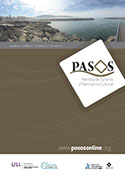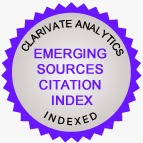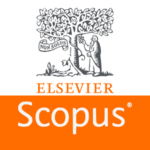Latent meanings in tourism photography: the case of black tourism Costa Morte (Galicia)
DOI:
https://doi.org/10.25145/j.pasos.2017.15.067Keywords:
Latent content, gaze, dark tourism, Costa Da Morte (Galicia), Experiences, Photo-elicitacionAbstract
To what extent can a photograph be a representation of the identity of a place, spread emotions, simulate / emulate experiences and motivate the visit to the destination? This study seeks to explore the fascination (gaze), the influence of landscape interpretation, the perception of authenticity, the psychological density associated with images of black tourism? What elements and symbols are possible in an explicit or latent way? What is the role of the tourist in the co-creation of the image of destiny? This study has as its starting point and unit of analysis the intangible heritage and the "aura" emanated by various places and landscapes of the Costa da Morte (Coast of Death) in Galicia spiced by the legends and mythology of a rich in events historical past. Using a methodological approach that included qualitative selection and analysis of photographs, documentaries and books, direct observation, passive netnography and photo elicitation several latent content elements or classification categories were proposed.
Downloads
Publication Facts
Reviewer profiles N/A
Author statements
- Academic society
- PASOS. Revista de Turismo y Patrimonio Cultural
- Publisher
- Instituto Universitario de Investigación Social y Turismo. Universidad de La Laguna (España) - Instituto Universitario da Maia ISMAI (Portugal)
References
Belk, R. 2011. Examining markets, marketing, consumers, and society through documentary films. Journal of Macromarketing, 31(4), 403-409.
Berger, A. 2004. Deconstructing travel: Cultural perspectives on tourism. Walnut Creek, CA: Altamira Press.
Berlyne, D. 1950. Novelty and curiosity as determinants of exploratory behavior. British Journal of Psychology, 41-68-80.
Blanco, J. 2014. 50 Faros de Galicia. Biblos.
Bouzas,P. & Domelo, X. 2000. Mitos, ritos y leyendas de Galicia. Ediciones Martínez Roca.
Bryman, A. 2008. Social research methods. Oxford: Oxford University Press.
Castro, A. & Rodríguez, G. 2009. Turismo de desastres: aproximación a la explotación turística del desastre del Prestige en la Costa da Morte. Revista Galega de Economía, 18(2).ISSN 1132-2799.
Cela, C.J. 2001. Madeira de Buxo. Lisboa: Editorial Noticias.
Cohen, E. 1974. Who is a tourist?: A conceptual clarification. The Sociological Review, 22 (4), 527-555.
Cole, T. 1999. Selling the Holocaust. From Auschwitz to Schindler: How history is bought, packaged, and sold. New York: Routledge.
Coplan, A. 2006. Catching characters’ emotions: emotional contagion responses to narrative fan fiction. Film Studies, 8(Summer), 26-38.
Cortizo, F. 2016. Naufragios y crónica marítima de Galicia asta 1899. La Coruña: Cartamar.
Crouch, D., Jackson, R., & Thompson, F. 2005. The media and the tourist imagination: Converging cultures. London: Routledge.
Debord, G. 1994. The society of spectacle. New York: Zone Books
Dempsey, J. V., & Tucker, S. A. 1994. Using photo-interviewing as a tool for research and evaluation. Educational Technology, 34(4), 55-62.
Foley, M., & Lennon, J. J. 1996. JFK and dark tourism: heart of darkness. Journal of International Heritage Studies, 2(4), 198-211.
Foote, K. 1997. Shadowed Ground: America’s Landscapes of Violence and Tragedy. Austin TX: University of Texas Press.
García, J. 2013. La leyenda de la Costa de la Muerte. Naufragios y faros como desencadenantes para la activación de un patrimonio marítimo. SEMATA, Ciencias Sociais e Humanidades, 25, 257-290. ISSN 1137-9669.
Gordon, R. & Cruz, J.~ 2002. Simulation theory. In L. Nadel(ed), Encyclopedia of Cognitive Science. Macmillan.
Hatfield, E., Cacioppo, J. T., & Rapson, R. L. 1992. Primitive emotional contagion. In M. S. Clark (Ed.), Emotion and social behavior. Thousand Oaks, CA: Sage.
Henderson, K. A. 1991. Dimensions of choice: A qualitative approach to recreation, parks, and leisure research (2nd ed.). College park, PA: Venture Publishing.
Herrero, N. 2009. La atracción turística de un espacio mítico: peregrinación al cabo de Finisterra. Revista de Turismo y Patrimonio Cultural, 7 (2), 163-178.
Hosany, S., & Prayag, G. 2013. Patterns of Tourists’ Emotional Responses, Satisfaction, and Intention to Recommend. Journal of Business Research, 66(6), 730-737.
Hsu, C. & Song, H. 2014. A Visual Analysis of Destinations in Travel Magazines. Journal of Travel & Tourism Marketing, 31(2), 162-177.
Hsu, S., Dehuang, N., & Woodside, A. G. 2009. Storytelling research of consumers’ self-reports of urban tourism experiences in China. Journal of Business Research, 62(12), 1223-1254.
Hunter, W. C. 2008. A typology of photographic representations for tourism: Depictions of groomed spaces. Tourism Management, 29(2), 354–365.
Hunter, W. C. 2010. Groomed spaces on Jeju Island: A typology of photographic representations for tourism. International Journal of Tourism Research, 12(6), 680–695.
Kelly, G. 1991. The Psychology or Personal Constructs, Volume 1. London: Routledge.
Kim, H., Stepchenkova, S. 2010. Effect of tourist photographs on attitudes towards destination: manifest and latent contente. Tourism Management, 49, 29-41.
Kolbe, R. H., & Burnett, M. S. 1991. Content-analysis research: An examination of applications with directives for improving research reliability and objectivity. Journal of Consumer Research, 18(2), 243–250.
Kozinets, R. V. 2010. Netnography: Doing ethnographic research online. Thousand Oaks: Sage.
Lee, T. & Crompton, J. 1992. Measuring novelty seeking in tourism. Annals of Tourism Research, 19, 732-751.
Lennon, J., & Foley, M. 2000. Dark tourism: The attraction of death and disaster. London: Continuum.
Lin, Y., Kerstetter, D., Nawijn, J. & Mitas, O. 2014. Changes in emotions and their interactions with personality in a vacation context. Tourism Management, 40, 416-424.
Llodra-Riera, I., Martínez-Ruiz, M. Jimenez-Zarco, A. & Izquierdo-Yusta, A. 2015. A multidimensional analysis of the information sources construct and its relevance for destination image formation. Tourism Management 48, 319-328.
Matteucci, X. 2013.Photo elicitation: Exploring tourist experiences with researcher-found images. Tourism Management, 35, 190-197.
Mayo, E. and Jarvis, L. 1981. The Psychology of Leisure Travel: Effective Marketing and Selling of Travel Services (Boston: CBI Publishing Co., Inc).
McIntosh. R. W. & Goeldner, C. 1986. Tourism Principles, Practices, Philosophies. New York: John Wiley.
Min, K. S., Martin, D., & Jung, J. M. 2013. Designing advertising campaigns for destinations with mixed images: Using visitor campaign goal messages to motivate visitors. Journal of Business Research, 66(6), 759-764.
Montgomery, K.C. 1952. Exploratory behavior and its relation to spontaneous alternation in a series of maze exposures. Journal of Comparative Physiology and Psychology, 45-50-57.
Moscardo, G., & Ballantyne, R. 2008. Interpretation and attractions. In A. Fyall, B. Garrod, A. Leask, & S. Wanhill (Eds.), Managing visitor attractions: New directions (pp. 237-252). Oxford: Butterworth-Heinemann.
Mouzo, R. 2014. Catálogo de naufragios. Costa da Morte- Galicia. Portada: donCLIC - Soluciones Tecnológicas.
Moutinho, L. 2000. Strategic Management in Tourism. CABI.
Özdemir, G. 2010. Photographs in brochures as the representations of induced image in the marketing of destinations: A case study of Istanbul. In P. M. Burns, J.A. Lester & L. Bibbings (Eds.), Tourism and visual culture, Volume 2: Methods and cases (pp. 169–180). Cambridge, MA: CAB International.
Podoshen, J. S., & Hunt, J. M. 2011. Equity restoration, the Holocaust and tourism of sacred sites. Tourism Management, 32(6), 1332-1342.
Podoshen, J. S. 2013. Dark tourism motivations: simulation, emotional contagion and topographic comparison. Tourism Management, 35(1), 263-271.
Podoshen, J., Venkatesh, V., Wallin, J., Andrzejewski, S. & Jin, Z. 2015. Dystopian dark tourism: An exploratory examination.Tourism Management, 1-13. http://dx.doi. org/10.1016/j.tourman.2015.05.002
Preston, S. D., & deWaal, F. B. M. (2002). Empathy: its ultimate and proximate bases. Behavioral and Brain Science, 25, 1-72.
Rego, P. & Costa, J. 2015. Guía de campo para la interpretación del feísmo en el paisaje gallego. Lugo: Horreum.
Reijnders, S. 2011. Stalking the count: Dracula, fandom and tourism. Annals of Tourism Research, 38(1), 231-248.
Ribeiro, N. 2009. Tourism Representation and Semiotics –Directions for Future Research. Cogitur: Journal of International Tourism Studies, 2, 7-14.
Riffe, D., Lacy, S., & Fico, F. G. 2005. Analyzing media messages: Using quantitative content analysis in research. NJ: Lawrence Erlbaum Associates Publisher.
Rial, T. 2014. Visibilidad y reputación online de un destino turístico: caso práctico de a Costa da Morte. Trabajo fin de Master en Planificación y Gestión de Destinos y Nuevos Produtos Turísticos, Universidade da Coruña.
Rickly-Boyd, J.M. 2012. Authenticity & Aura: A Benjaminian Approach to Tourism. Annals of Tourism Research, 39(1), 269–289.
Rojek, C. 1997. Indexing, dragging and the social construction of tourist sites. In C. Rojek, & J. Urry (Eds.), Touring cultures: Transformations of travel and theory (pp. 52-74). London: Routledge.
Salazar, N. 2012. Tourism Imaginaries: a conceptual approach. Annals of Tourism Research, 39 (2), 863-882.
Sharpley, R. 2009. Shedding light on dark tourism: an introduction. In R. Sharpley, & P. R. Stone (Eds.), The darker side of travel: The theory and practice of dark tourism (pp. 3-22). Tonawanda: Channel View.
Sharpley, R., & Stone, P. R. 2009. (Re)presenting the macabre: interpretation, kitschification and authenticity. In R. Sharpley, & P. R. Stone (Eds.), The darker side of travel: The theory and practice of dark tourism (pp. 109e128). Tonawanda: Channel View.
Stone, P. R. 2005. Dark tourism e and old concept in a new world. Tourism20, The Tourism Society, Quarter IV (25).
Stone, P. R. 2006. A dark tourism spectrum: towards a typology of death and macabre related tourist sites, attractions and exhibitions. Tourism, 54(2), 145-160.
Stone, P. R. 2009. Making absent death present. In R. Sharpley, & P. R. Stone (Eds.), The darker side of travel: The theory and practice of dark tourism (pp. 23-38). Tonawanda: Channel View.
Stone, P., & Sharpley, R. 2008. Consuming dark tourism: a thanatological perspective. Annals of Tourism Research, 35(2), 574-595.
Tarlow P. E. 2005. Dark Tourism: The appealing ‘dark side’ of tourism and more. In: Novelli M. (ed) Niche Tourism – Contemporary Issues, Trends and Cases (pp.47-58). Oxford: Butterworth Heinemann.
Tilden, F. 1977. Interpreting our heritage. Chapel Hill, NC: University of North Carolina Press.
Van House, N. 2009. Collocated photo sharing, story-telling, and the performance of self. International Journal Human-Computer Studies, 67, 1073-1086.
Xiang,Z. & Gretzel,U. 2010. Role of social media in online travel information search. Tourism Management, 31(2): 179-188.
Downloads
Published
How to Cite
Issue
Section
License
I confirm that the work is original (of my/our authorship), and that it will not be submitted to other journals or publications until the final resolution of the review process in PASOS, RTPC.
I authorize the publication of my work by PASOS, PSTN of free and open access in any of the formats that I deem appropriate, for an indefinite period of time and as a non-remunerated collaboration.
Likewise, the author(s) understands that the published work may be linked or deposited on any server or included in other publications (republication), provided that the new place and/or new edition references the original publication and acknowledges the authorship and copyright ownership of PASOS RTPC publications.
Authors understand that a plagiarism-self-plagiarism check will be performed, and the article may be removed at any time from the editorial flow.










